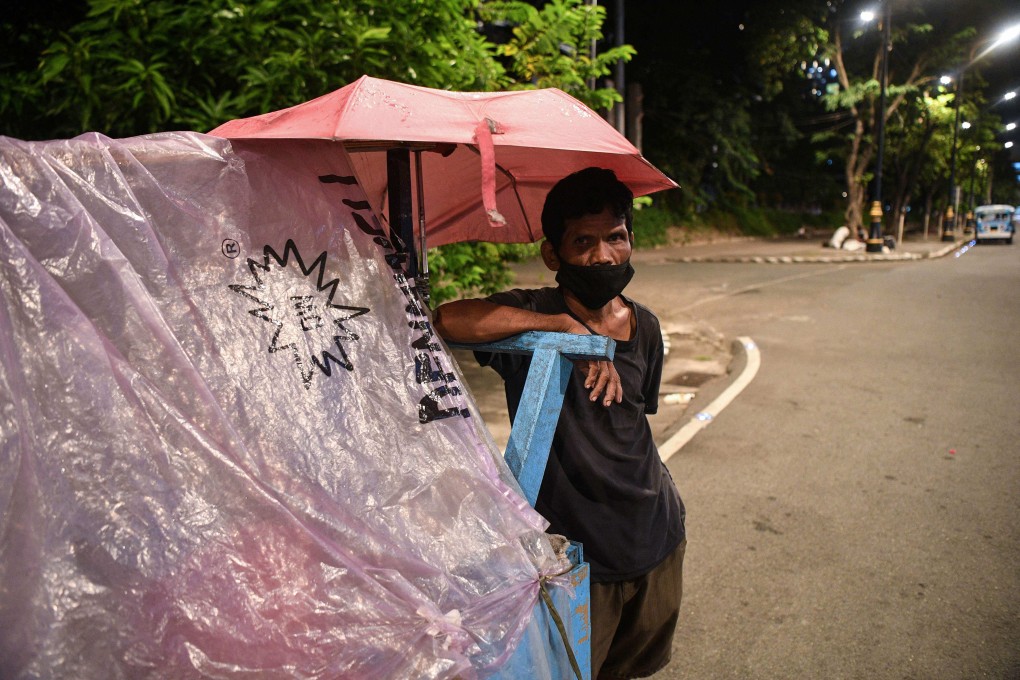Advertisement
Manila’s homeless find shelter in pushcarts that are used as storage, income source
- Human-powered wooden carts are used as shelter, storage and a source of income, such as collecting trash to sell to recyclers
- Many homeless people lose their source of income when their pushcarts are confiscated by local officials during street-clearing operations
Reading Time:2 minutes
Why you can trust SCMP

Like thousands of homeless people in the Philippine capital Manila, Maricel Abawag and her son used to sleep on flattened cardboard boxes laid out on footpaths. Then they got a pushcart.
Advertisement
Pushcarts, known as karitons, are a common sight in the city of more than 13 million people.
Often made from scraps of wood, the human-powered carts are used as shelter, storage and a source of income, such as collecting trash to sell to recyclers.
Abawag, 44, received her pushcart in November 2020 from a Catholic brother.
About a year earlier Abawag had “lost everything” when her partner was jailed for beating her. He died of a heart attack in custody.

She began sleeping on the streets while still breastfeeding her baby.

Advertisement